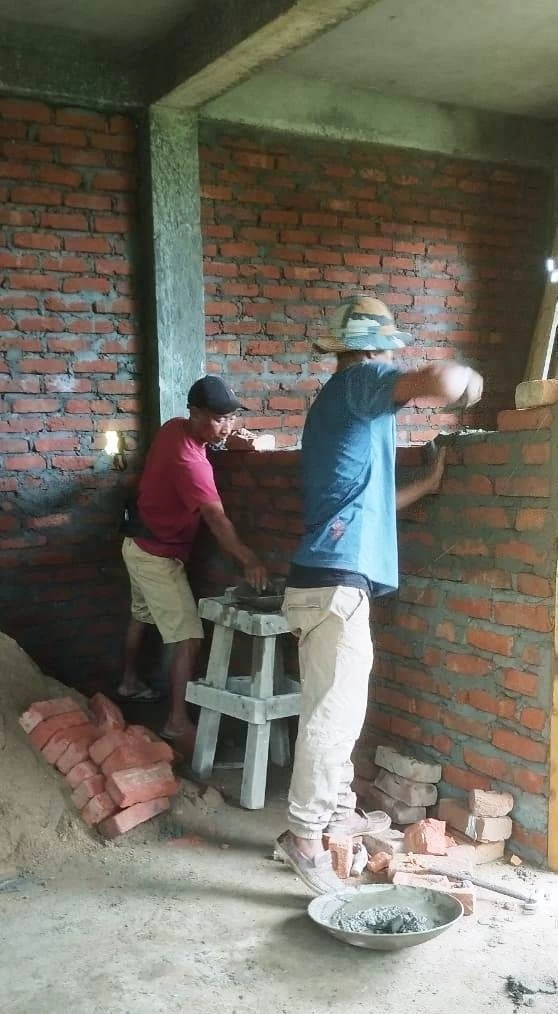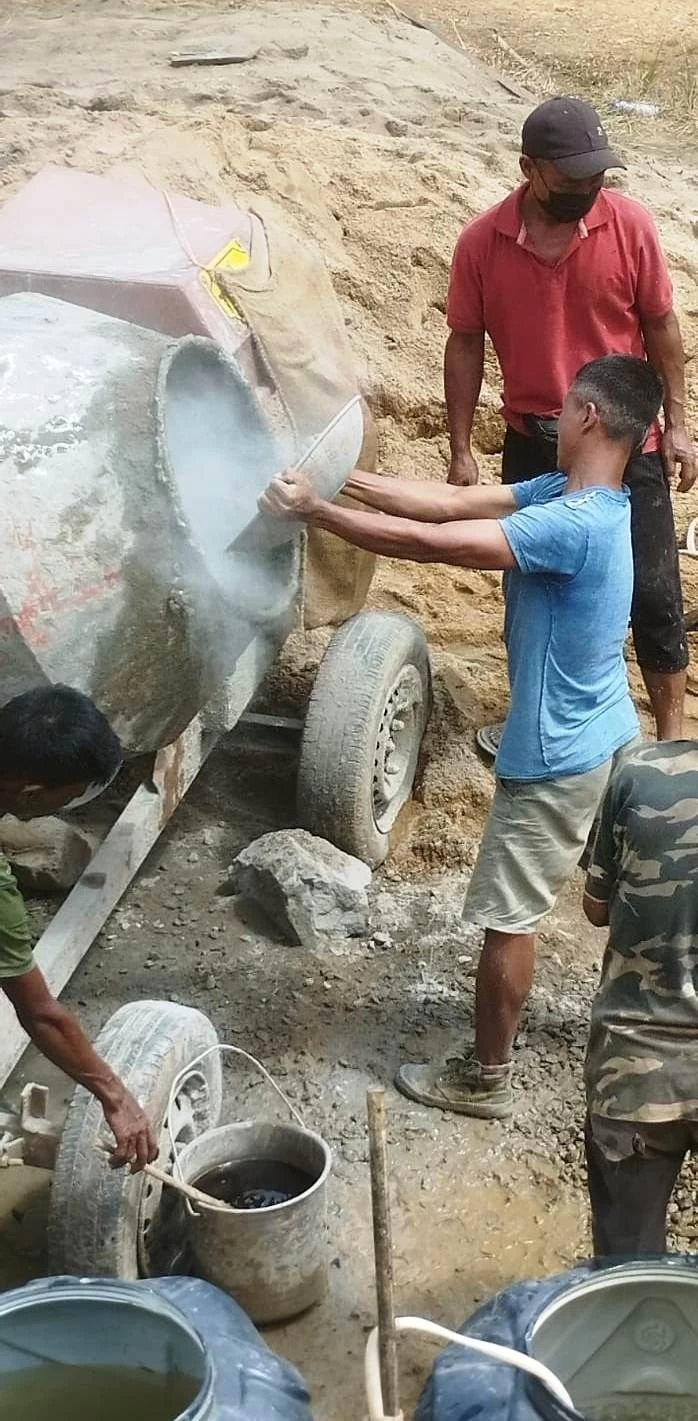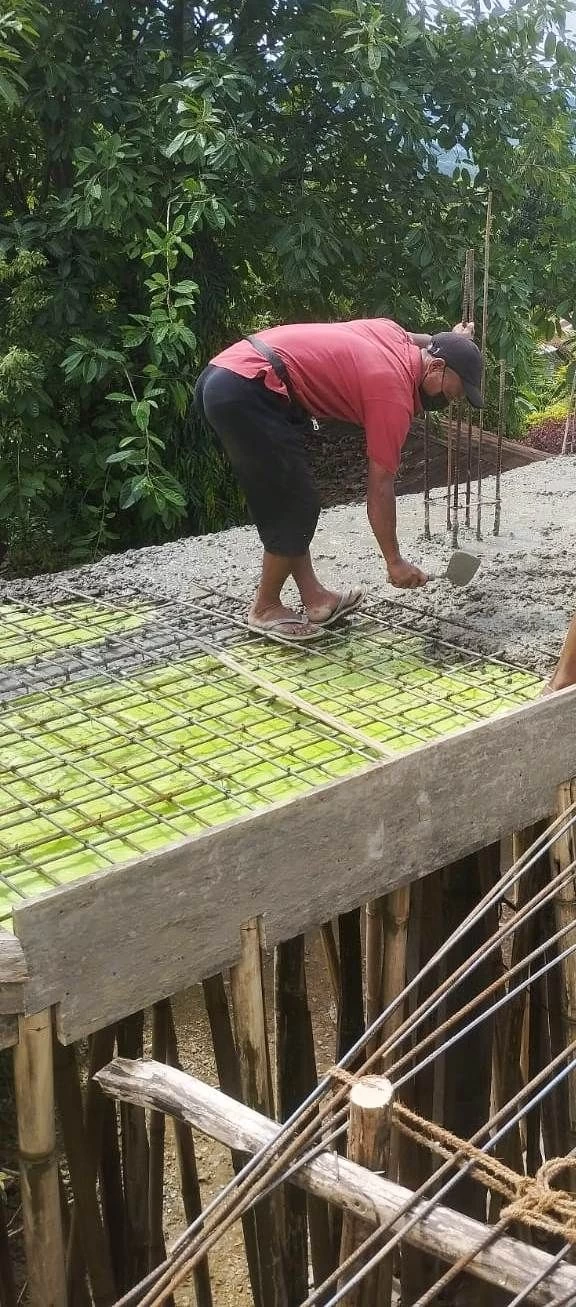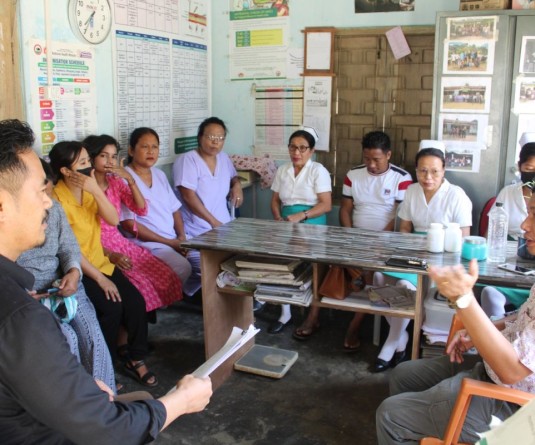A team of local construction workers on the job in Mon district. Construction industry in Nagaland, once completely dominated by migrant workers, has been witnessing a transformative shift as local construction workers step up to create a niche for themselves and gain a foothold. Yet their journey is laced with unique set of challenges.
.jpeg)
Imti Longchar
Dimapur/Mon/Mokokchung | October 2
Construction industry in Nagaland, once completely dominated by migrant labourers, has been witnessing a transformative shift as local construction workers step up to create a niche for themselves and gain a foothold.
While Dimapur, the State’s commercial hub continue to rely heavily on migrant labourers, in recent years, a significant shift has been observed in most of the districts, where local construction workers are gradually replacing the once-prevalent reliance on migrant (non Nagas) workers.
However, as these workers strive, their journey is laced with unique set of challenges. For instance, they must overcome the hurdles of gaining the trust of their communities as skepticism often surrounds the capabilities of local workers in the industry of concrete.

One of the most glaring ironies, according to experiences shared by local foremen, is that construction project owners often bypass local foremen (tikadars) in favour of migrant counterparts to oversee construction projects. These migrant foremen, would, in turn enlist local workers to carry out all the manual construction work.
This has left many local professionals frustrated and concerned about the utilisation of their skills and experience and pondering whether the system is doing justice to the local talent pool.
In Mon district, at least 80% of mason and unskilled workers (mistri and jugali) in the construction industry are locals. There is also an estimated 20-30 local foremen, figures suggested by the construction worker community. Despite the numbers, majority of the supervising jobs are awarded to non locals foremen.

“Convincing fellow community members to repose trust in our skills and give us opportunities to take up construction projects has been an uphill battle,” K Chingwang Konyak, a foreman operating from Mon told The Morung Express while pointing out that the position of a foreman remains an insecure job for a local.
Chingwang has a team of local construction workers, both skilled and unskilled, that depends on him to provide employment and livelihood. He also has invested in adequate machinery that qualifies him to take up full-fledged construction projects.
Since joining the construction industry in 2014, he underwent the rituals of honing the craft with progress from a unskilled labour to a mason then to foreman.
In addition, he has completed the Year of Construction Workers 2016-17 training which is equivalent to Assistant Mason under National Skill Development Corporation.
In 2021, Chingwang cleared the assessment for the job role of a Mason Concrete conforming to the National Skills Qualification Framework Level-3, an initiative of the National Skill Development Corporation and the Nagaland Government. He is also a certified electrician after completing training under the Nagaland Building and Other Construction Workers Welfare Board and Zynorique Initiatives Society.
Despite these multiple training, Chingwang finds himself being sidelined in favour of migrant foremen and is most often left without projects. And there are numerous others like him, who despite proper skills and qualification, are struggling to gain trust of the local community.
“It’s not that there is lack of construction project opportunities, be it residential, commercial or in the government sector in Mon district. It’s just that the local community still prefers migrant workers over us to oversee a project. This is where we are helpless,” Chingwang pointed out.

According to him, the community of local construction workers has been trying to create awareness on this to the general populace.
Yet, most still turn their eyes towards a foreman coming from Assam’s Sonari or Namtola, even though this entails the peculiar arrangement of local construction workers executing the physical and technical aspects while the foreman is only there as a showpiece.
Considering the scenario, Chingwang said there are many occasions he is no longer a foreman and takes up any menial jobs, be it digging a sceptic tank or jungle cutting to sustain his family. He also has had to disband his crew so that they can go search for job opportunities elsewhere with other construction projects. This mean loss of opportunity and currency since he is short of a working team if a project comes his way.
Disparity in rates
Along with the difficulty of securing construction projects, local foremen also face pressure to offer lower rates for their service as compared to their migrant counterparts.
“If a migrant or non local foreman gets Rs 180-200 per sq ft for a construction project, we are offered Rs 150 per sq ft or even less. This sounds discrimination but we don’t have a choice,” Chingwang said.
Monphong, another seasoned foreman hailing from Lampong Sheenghah village, and operating out of Tizit explained why he expanded his work jurisdiction outside of Mon town- due to the difficulty of getting projects as preference are mostly given to non locals.
“Being a local means lower rates for our services, even though we are no less inferior in our skills from our non-local counterparts,” he maintained.
Citing instance, Monphong said a local foreman is offered Rs 170-180 per sq ft for a construction project while a migrant foreman can demand up to Rs 250 per sq ft and still the project would go to him. “Most time, even getting such offers are slim and we are back to doing odd jobs, any kind of job, even that of an unskilled labour, to sustain our families,” he explained.
Meanwhile, he disclosed that the current project he is engaged in was awarded only after he furnished a certificate to the owner, with credentials of a state government initiated skill proficiency training he had undertaken.
If such certification can help us allay the doubts of our community towards the locals construction workers, my appeal to the state government is to provide such training frequently and make some regulations to filter the skilled from the unskilled, Mongphong opined.
“Our community misconception with Naga construction workers needs to change. We are capable and as good if not better than the rest,” he held.
A foreman’s role?
In Mokokchung, akin to Mon district, there is no dearth of local construction workers, supplemented by a large floating population from Eastern Nagaland. Yet when it comes to taking the mantle of a foreman, takers are a few.
Moa, who has been engaged in the construction sector as a full-fledged mason since 2016, noted that the reason behind the absence of local foremen may not be because of lack of expertise among the local community but because of marginalisation by own people.
“Just consider, out of a 100 construction undertaking, the chances of a local securing projects from our own people is only 5%,” he underscored. Here in Mokokchung, in any construction landscape, you will see all the masons and the unskilled labors are locals, except for the foreman.
Moa also questioned the apparent discrepancy between the traditional expectations of a foreman’s role and the reality on the ground- “We hardly ever see the foreman on the site. He shows up once or twice a week but the rest of the time, it is the construction crew doing the heavy lifting. So what is the foreman’s actual job?”
Traditionally, a foreman is responsible for overseeing and coordinating the activities on a construction site, supervising construction workers and subcontractors, ensuring that works progresses smoothly, and addressing any issues that may arise. They are expected to provide guidance to the crew, ensure health and safety protocols, quality standards and manage the project schedule.
This is the first report of the five-part series highlighting the experiences and challenges faced by the construction industry in Nagaland as part of the Kohima Press Club & Nagaland Building and Other Construction Workers Welfare Board Media Fellowship 2023.




.jpg)
